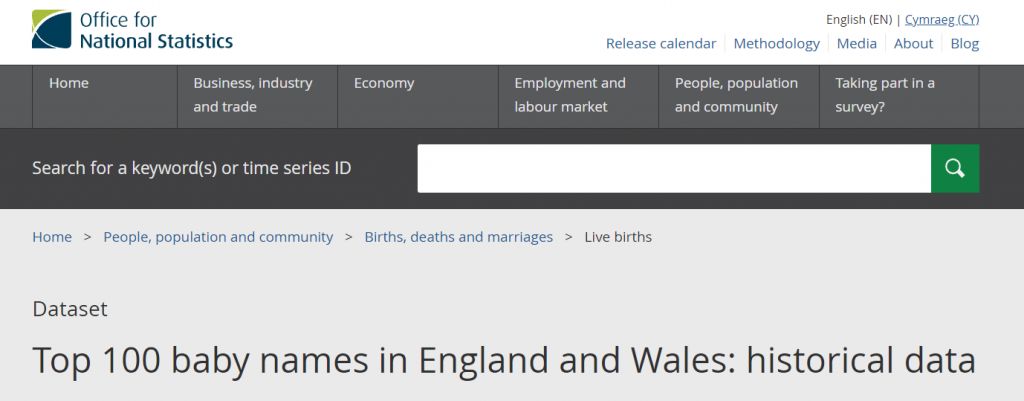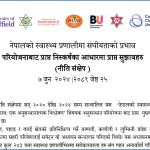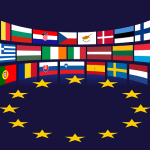 Earlier this week the Office for National Statistics (ONS) published its annual list of the most popular baby names for boys and girls. The top three names for girls were: Olivia, Amelia and Lily and for boys these were Muhammad, Noah and Oliver. Interestingly two different spellings of Muhammad, namely Mohammed and Muhammed also made it to the top hundred most common names. There is a clear sociology in the naming of babies. First, there is an element of culture and religion, but there is also a clear element of fashion.
Earlier this week the Office for National Statistics (ONS) published its annual list of the most popular baby names for boys and girls. The top three names for girls were: Olivia, Amelia and Lily and for boys these were Muhammad, Noah and Oliver. Interestingly two different spellings of Muhammad, namely Mohammed and Muhammed also made it to the top hundred most common names. There is a clear sociology in the naming of babies. First, there is an element of culture and religion, but there is also a clear element of fashion.
To make a simple comparison I looked at the top three most common names for girls and boys in neighbouring the Netherlands. According to Dutch official statistics the top girls’ names were in 2024: Emma, Olivia and Lily, and the top three boys names were: Noah, Luca and Lucas. Interestingly, the top name in England and Wales Muhammad is not even in the top 40 most popular boys’ names in the Netherlands, and neither are Mohammed and Muhammed. However, whereas England and Wales listed three different spellings of Muhammad, the Netherlands had six different ones (these were names used at least ten times that year): Muhammad, Mohammed, Mohamed, Mohamad, Muhammed, and Muhammad. All variants together made it the fourth most popular boys name in the Netherlands.

To highlight the fashion element of naming babies, the name Edwin was not listed on either country’s list. The ONS website also offers historic lists of top 100 names for baby boys and girls for 1904 to 2024 at ten-yearly intervals. The very last year Edwin was in the top 100 boys’ names was in 1944 when it reached number 89 in the top 100!
Prof. Edwin van Teijlingen
Professor of Reproductive Health, Centre for Midwifery & Women’s Health 












 New Nepal scoping review on maternal & neonatal health
New Nepal scoping review on maternal & neonatal health Fourth INRC Symposium: From Clinical Applications to Neuro-Inspired Computation
Fourth INRC Symposium: From Clinical Applications to Neuro-Inspired Computation Writing policy briefs
Writing policy briefs Upholding Excellence: The Concordat to Support Research Integrity
Upholding Excellence: The Concordat to Support Research Integrity ECR Funding Open Call: Research Culture & Community Grant – Application Deadline Friday 12 December
ECR Funding Open Call: Research Culture & Community Grant – Application Deadline Friday 12 December MSCA Postdoctoral Fellowships 2025 Call
MSCA Postdoctoral Fellowships 2025 Call ERC Advanced Grant 2025 Webinar
ERC Advanced Grant 2025 Webinar Horizon Europe Work Programme 2025 Published
Horizon Europe Work Programme 2025 Published Horizon Europe 2025 Work Programme pre-Published
Horizon Europe 2025 Work Programme pre-Published Update on UKRO services
Update on UKRO services European research project exploring use of ‘virtual twins’ to better manage metabolic associated fatty liver disease
European research project exploring use of ‘virtual twins’ to better manage metabolic associated fatty liver disease